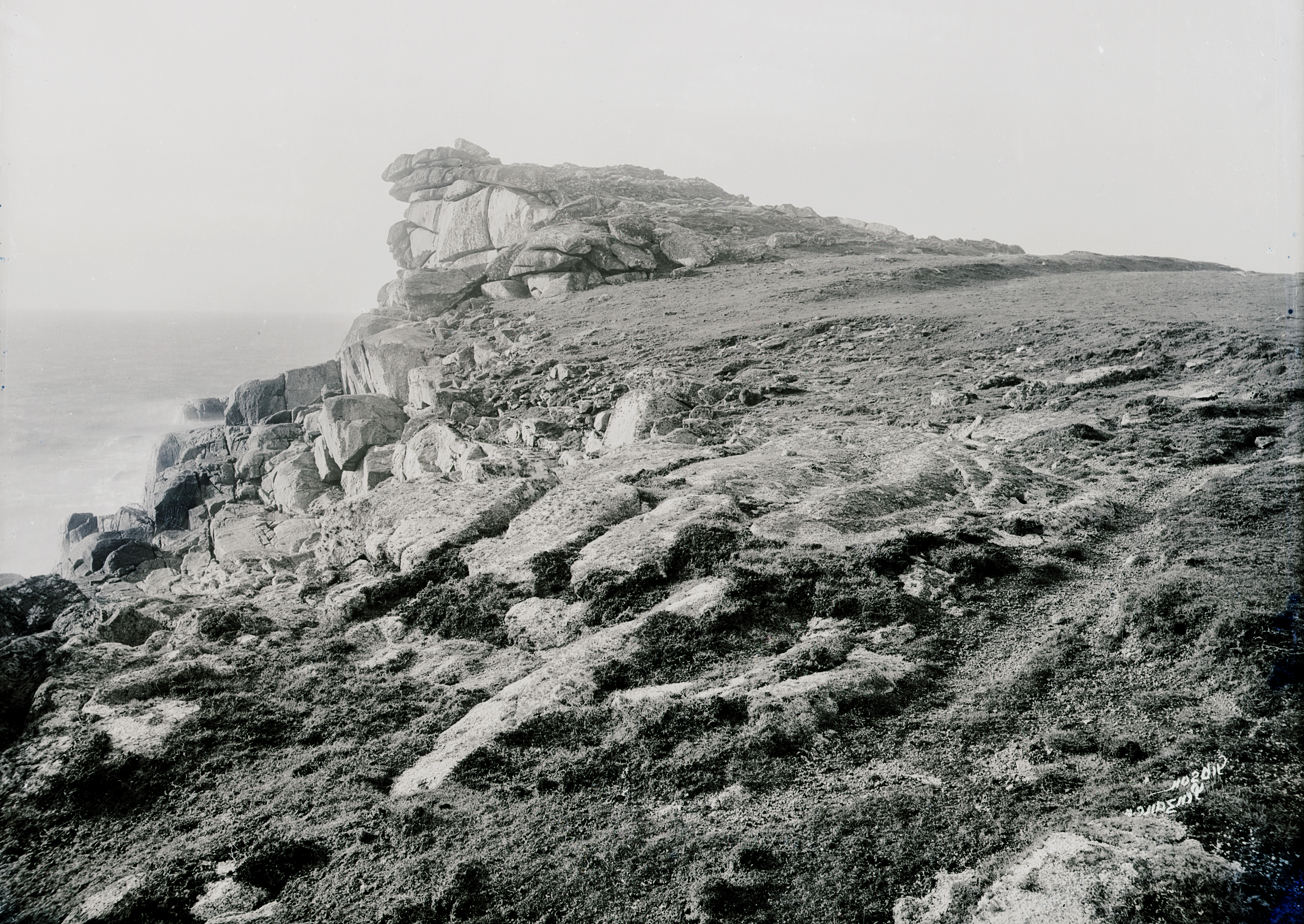Giant’s Castle Ancient Site
“It is call’d, as I said but now, the Giant’s Castle, the common people in these islands, as well as elsewhere, attributing all extraordinary works to giants”
Giant’s Castle - the site of the labyrinth we are hoping to restore - is the name given to an Iron Age cliff castle on the St Mary’s coast. We know that the labyrinth at Giant’s Castle cannot be contemporaneous with this Iron Age fort, because it is conspicuously absent from later accounts of the Giant’s Castle area from the 18th and 19th Centuries:
“What they call here the Giant's Castle is certainly prior to the Norman Conquest. This Castle is situated on a promontory, which towards the sea is an immense crag of rocks, as if heaped on each other: this heap, or turret of rocks declines also quick, but not so rough towards the land, and then spreads to join the downs, where at the foot of this knoll it has first a ditch crossing the neck of land from sea to sea; then a low Vallum of the same direction; next, a second ditch and a higher Vallum; lastly, near the top of this crag, it had a wall of stone encompassing every part, but where the natural rocks were a sufficient security; this wall by the ruins appears to have been very high and thick. It is call'd, as I said but now, the Giant's Castle, the common people in these islands, as well as elsewhere, attributing all extraordinary works to giants. We have many of these Castles on the Cornish cliffs; they seem designed by pirates and invaders to protect themselves whilst they were landing their forces, ammunition and implements of war, and to secure a safe retreat towards their ships in case of need. I am apt therefore to think that such Cliff-Castles are as ancient as the times of the Danish, if not of the Saxon, invasions. From this hill we were pleas'd to see our own country, Cornwall, in a shape new to us, but what certainly induc'd the Ancients to reckon it among the Isles, generally call'd by them the Cassiterides; for as an Island it indeed appears to every eye from Scilly.”
- William Borlase, A Topographical and Historical Survey of the Islands of Scilly, 1756
Upon a lofty eminence at the E. corner of this bay are the remains of a fort, suppofed to have been built by the Danes, which towards the sea is an immense crag of rocks, about one hundred feet high, as if heaped upon each other. This heap or turret of rocks, has a sudden decline, but not fo rough towards the land, as towards the sea; it then spreads to join the downs, where, at the foot of this hill, it has first a ditch, crossing the neck of land from sea to sea; and then a low rampart in the same direction. After this there is another ditch, with a higher vallum; and lastly, near the top of the crag, there was a wall of fsone surrounding every part of it, unles where the natural rocks were a sufficient security. This wall by its ruins appears to have been very high and thick. It has the name of the Giants Caftle, becaufe in these islands, all extraordinary works are, by the common people, attributed to giants or the Devil. It was probably designed by the Danes as a retreat from the Saxons, in case they should be cut off from their ships, and certainly it muft have been a place of great srength in those times, especially if they had plenty of provisions within it.
- John Troutbeck, A Survey of the Ancient and Present State of the Scilly Islands, 1796
“Proceeding round the coast, in a North Easterly direction, the next object is Giant's Castle Bay, which may be said to be cased with rocks. The bay derives its name from some stupendous rocks hanging over the cliffs of its Eastern shore, which, at a distance, have an appearance of being regularly piled, in terrific grandeur, over the deep that roars below. This tremendous crag is about a hundred feet high, declining suddenly towards the sea, but more gently on the land side; from which, however, all communication was cut off by a narrow ditch and low rampart, crossing the promontory from bay to bay. Within this inclosure the natural eminence was strongly fortified by a thick stone wall, some remains of which are still heaped or scattered in various directions. This place could never have been distinguished for convenience; yet when nature and art were thus combined for its defence, it must have presented a most formidable aspect to its enemies.”
- Rev. George Woodley, A View of the Present State of the Scilly Islands, 1822
We have also found early images of Giant’s Castle in the Scilly Arts and Heritage museum archive. While the site of the maze is not shown, the ramparts of the castle are far more pronounced and the shape of the surrounding land has changed a lot since this image was taken. Local archaeologist Katharine Sawyer told us that this was because the castle was used as a target for machine gun practice during WWII, where it was damaged considerably. Perhaps the labyrinth dates from a similar time, when the landscape at Giant’s Castle was changing.
An early Gibson Family glass plate photograph of Giant’s Castle (west side) rock formation and Iron Age cliff-castle.
A Frances Frith & Co (whole plate enlargement) of Giant’s Castle (east side) rock formation and Iron Age cliff-castle, from 1891.


